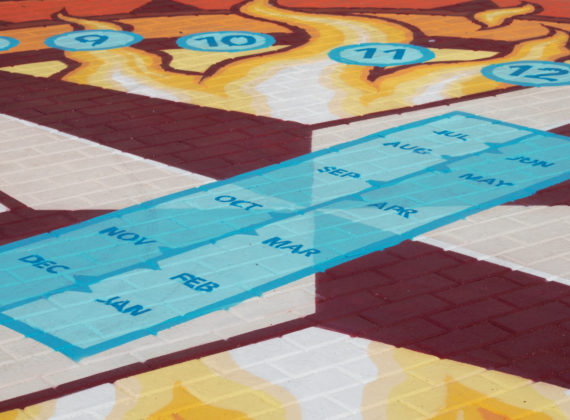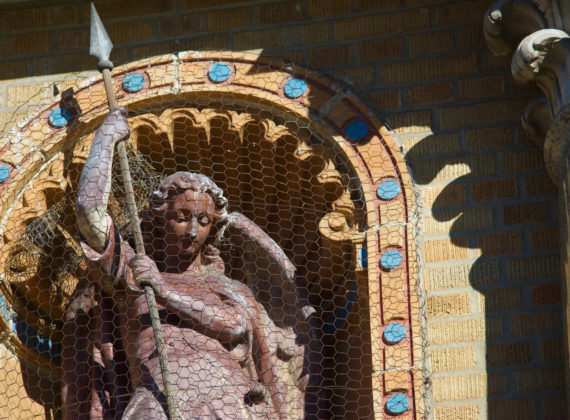
Today, everything is expected on demand — from ordering groceries online to binge-watching television shows to whatever Tinder is. So, why should it come as a surprise that few want to wait for the entertainment to make its way to them? Parades can be frustratingly slow and unpredictable in pacing, often taking place during uncomfortable weather.
And anyway, cities are about change, not stagnation. Right? Interests change. Demographics change. Someone finally gets smart and decides it is no longer appropriate to subsidize parades with tax dollars.
Those that had been struggling to draw any crowd of note in recent years would do well to take a time out and reassess if this the current incarnation of the event is worth the time, trouble, and money.
It might be more sensible to organize exactly one parade per year and let all reasonable groups (i.e. not Nazis or the Alt-Wrong) take part with floats representing their clubs, schools, and what have you. This would let those with fewer resources participate without having to raise money and organize an entire separate parade. Want to address the little segregation problem our country is having? A small step would be for people to expose themselves to other cultures — something that we definitely do not have enough of happening in our current array of parades; if you attend such events as these with a camera year-after-year, you start to notice little things like who is and who is not standing on the sidewalk viewing the festivities.
Over the years, Hartford has played host to a number of parades that no longer exist. Here are a few, in no particular order:
Free Bridge Parade: A procession for the “Free Bridge” in 1889.
Bridge Days: And then in 1908, a multi-day festival marked the opening of what would later come to be known as the Bulkeley Bridge. One day featured a children’s parade. There were also parades described as industrial, Masonic, civic, and military. For a bridge. This means only one thing: Hartford is Pawnee.
Barnum & Bailey Parade: The Hartford Courant piece on this in 1903 reads like an ad. It seems that the size of the parade, crowds, and general interest in this diminished over the years until the circus finally pulled the plug on the elephant acts. You won’t believe what happened next…except, really, it was entirely predictable. Interests change.
Shriners’ Parade: It’s hard to imagine this warranting its own parade, and yet.
African American Parade: This began in the mid-1990s, fizzled, and then made another appearance in 2015.
Pulaski-Kosciuszko Parade/Pulaski Parade: At times this took place on the same day as the Columbus Day Parade. They seem to have the right idea with the Little Poland Festival in New Britain: shut down a few blocks on one street, plan entertainment at a couple of stages, have lots of food and drink for people to choose from, and call it a day.
Cigar Valley Tobacco Festival Parade: A multi-day festival included a parade with floats. This was also called the Cigar Harvest Festival and Tobacco Festival. As happens frequently today, some events just cannot decide what to call themselves. This happened September 11, 1951.
Halloween Parade: This was a benefit for AIDS Project Hartford in 1998.
Preparedness Parade: A bunch of places, Hartford included, had these pro-military parades in 1916. These were celebrations of how prepared a place was as the nation moved to enter into World War I the following year.
Liberty Loan Parade: Also referred to in some places as the “Liberty Parade.” Cars? Patriotism? Liberty Bonds? Who can know?! Actually, this was another WWI thing, designed to encourage the public to buy war bonds.
The Big Parade: This seems to have been an Independence Day parade in 1891, with the Hartford Courant remarking: “The crowd on the street was orderly, and, though a large business was done by the saloons, and drunkards plenty before nine in the morning, still there was no display of ugliness.” It seems there was a “Bicycle Parade” either as part of or in addition to The Big Parade. Other events in other years were also referred to as “big parade.”
Monster Parade/Political Parade: In November 1896. Reporting back in the day was fairly weak. My initial reaction was excitement that there had been a monster-themed parade. I’m guessing this was not that. But there are monsters in politics.
Auto Parade: In October 1908, the Hartford Courant wrote: “There is a great dearth of electric vehicles and the committee are at a loss to know why this should be.” We are asking that same question over a century later, even as autos have infiltrated all parades in Hartford.
Labor Day Parade: The first one in 1889 was reported to have “only” 400 marchers. A labor meeting followed this parade, which started an hour late.
Memorial Day Parade: It used to be that you did not need to go to the suburbs to observe Memorial Day in this fashion. A parade would begin in the West End and end at the Civic Center. Later, it would begin and end at the State Capitol, looping through downtown. This petered out in the early 1990s, with the blame placed on “apathy” and a decline in patriotism. A 1991 Courant article mentioned “the death of the Veterans Day parade because of poor attendance.” The paper one year earlier referred to the Veterans Day parade as “an on-again, off-again observance, kept alive by a handful of diehard patriots and mostly ignored by the public.”


Richard
One parade I miss is and was the QLGBT PRIDE parade. A little know fact is that the first one was held in Hartford in 1972 by the Kalos Society / Gay Liberation Front. Of course for many years we held marches not parades and along with the first march here there was held a week long festival of “gay” culture. I am not sure of the exact year but it was in the 80’s that Pride marches were then held yearly. A check in the archives at CCSU would certainly produce articles about early marches for liberation. The Dodd Center holds the Foster Gunnison archives which contain quite a wealth of information about early organizing days not only here in Hartford but across America as well.